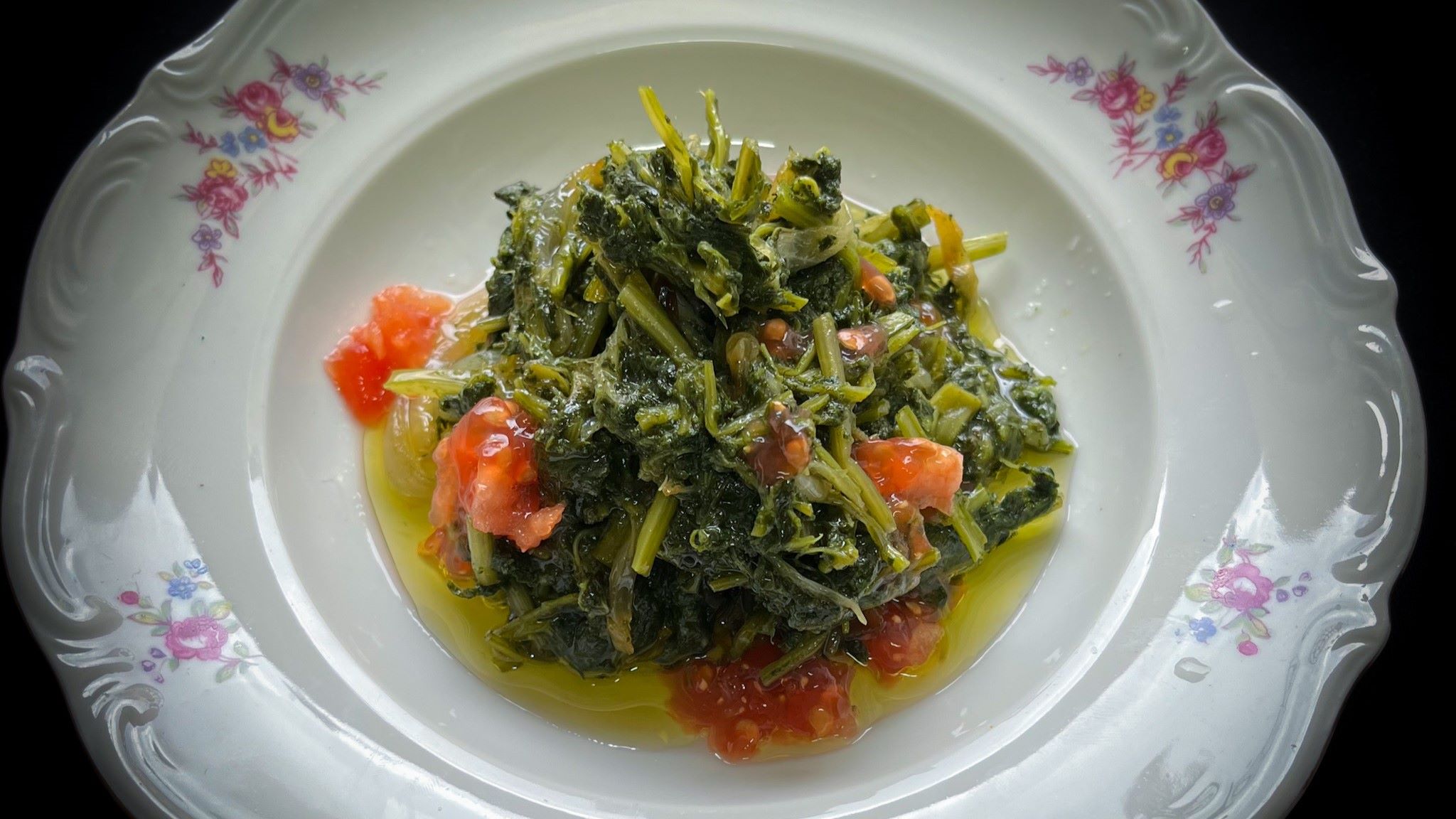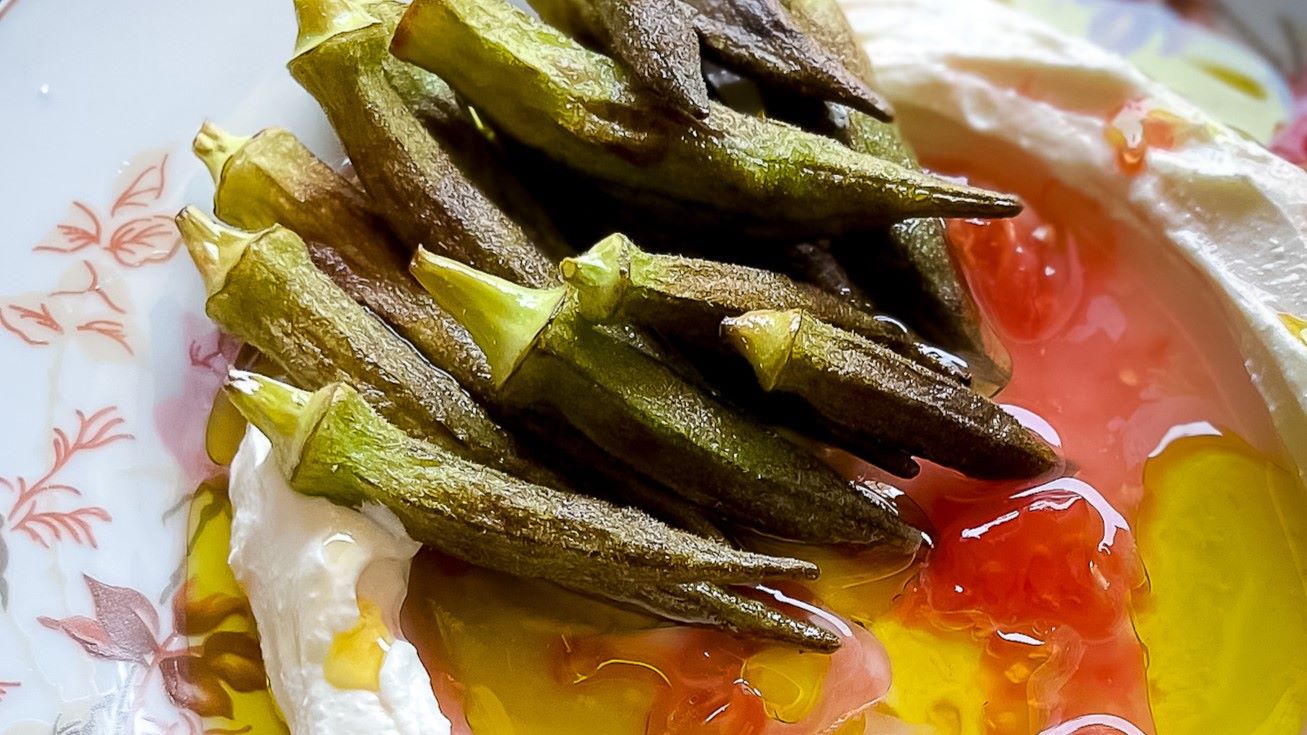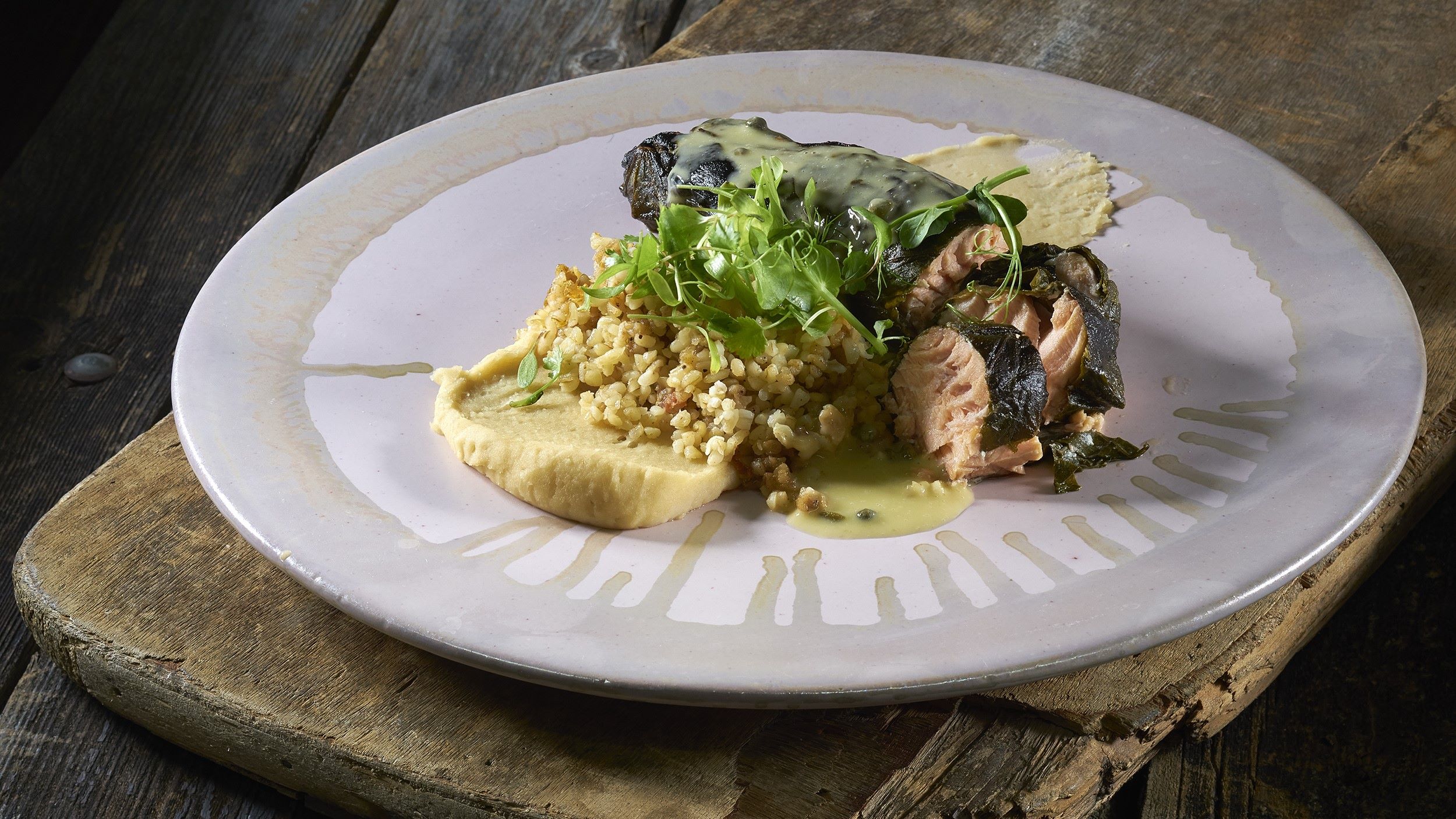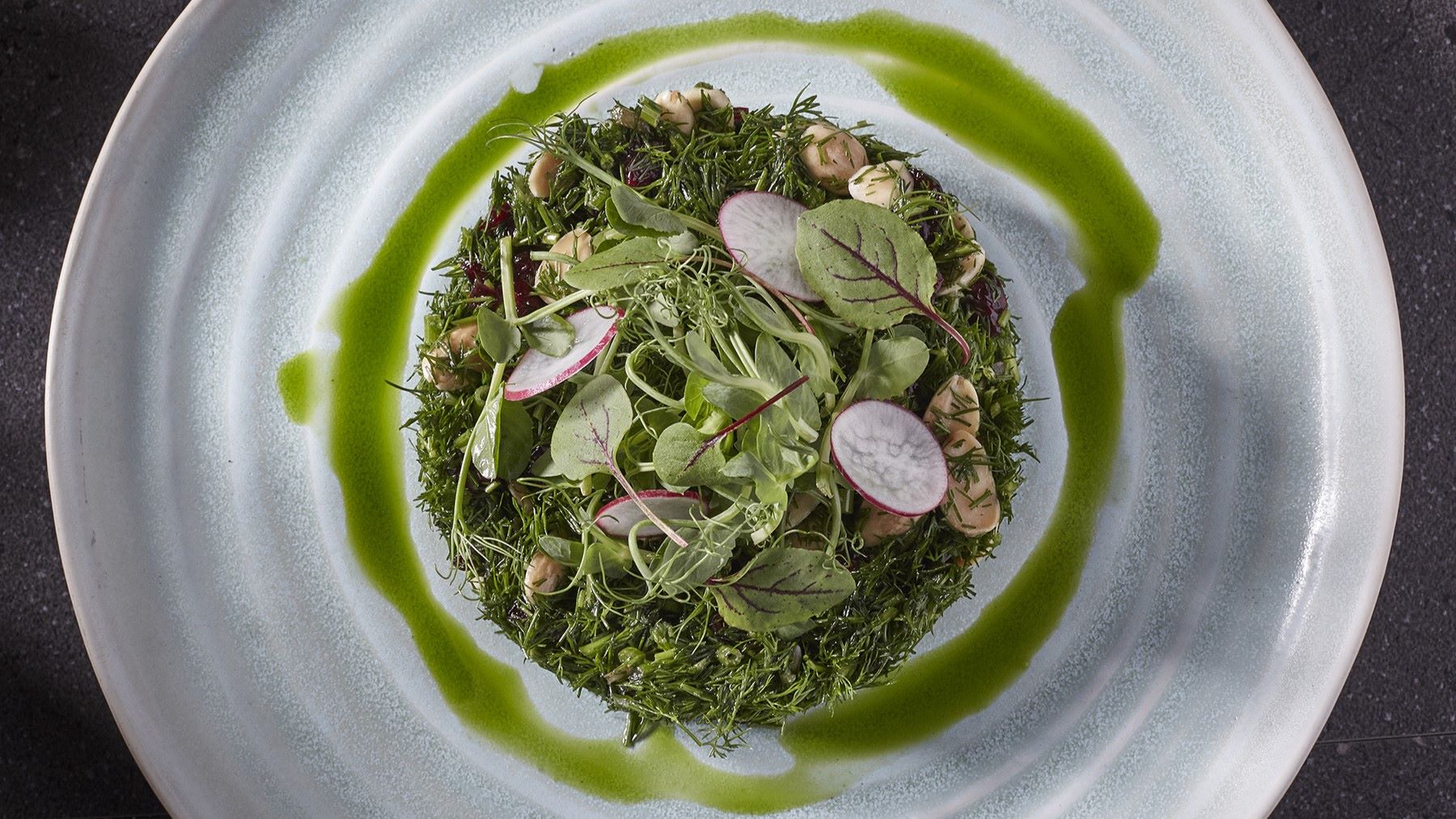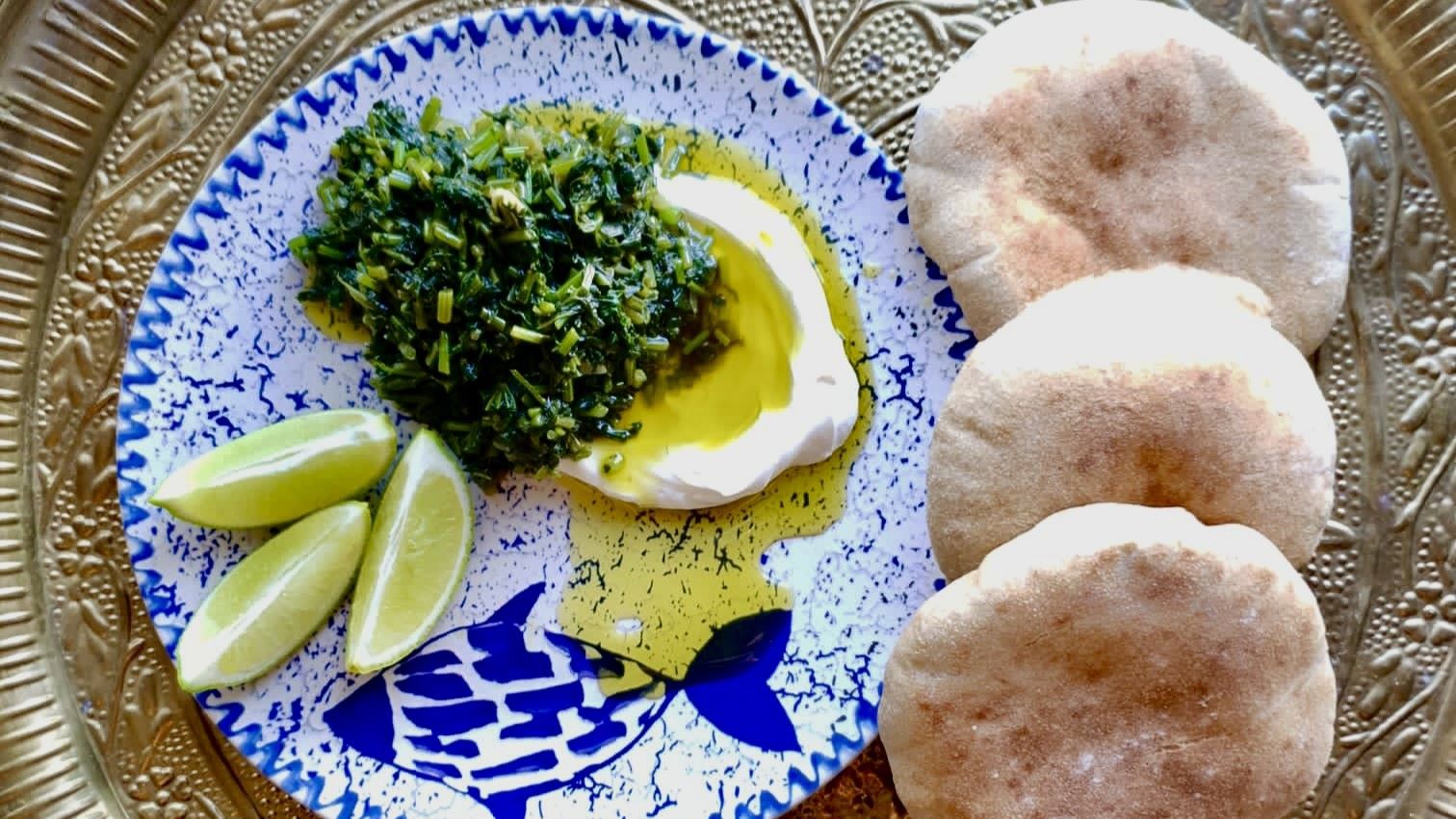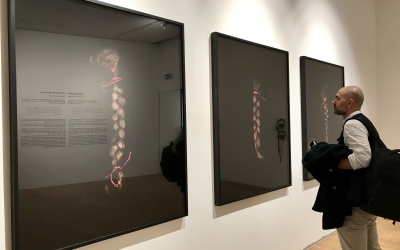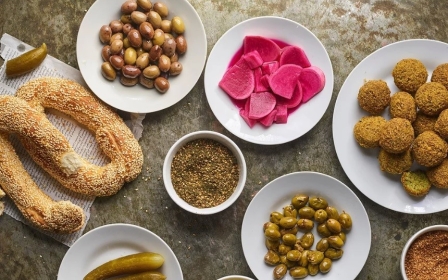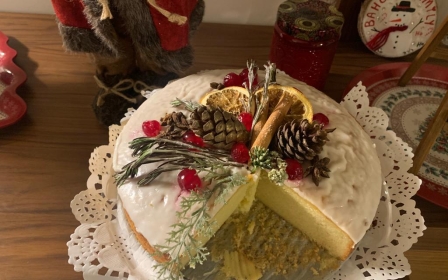The art of Palestinian cuisine: A journey from tradition to modernity
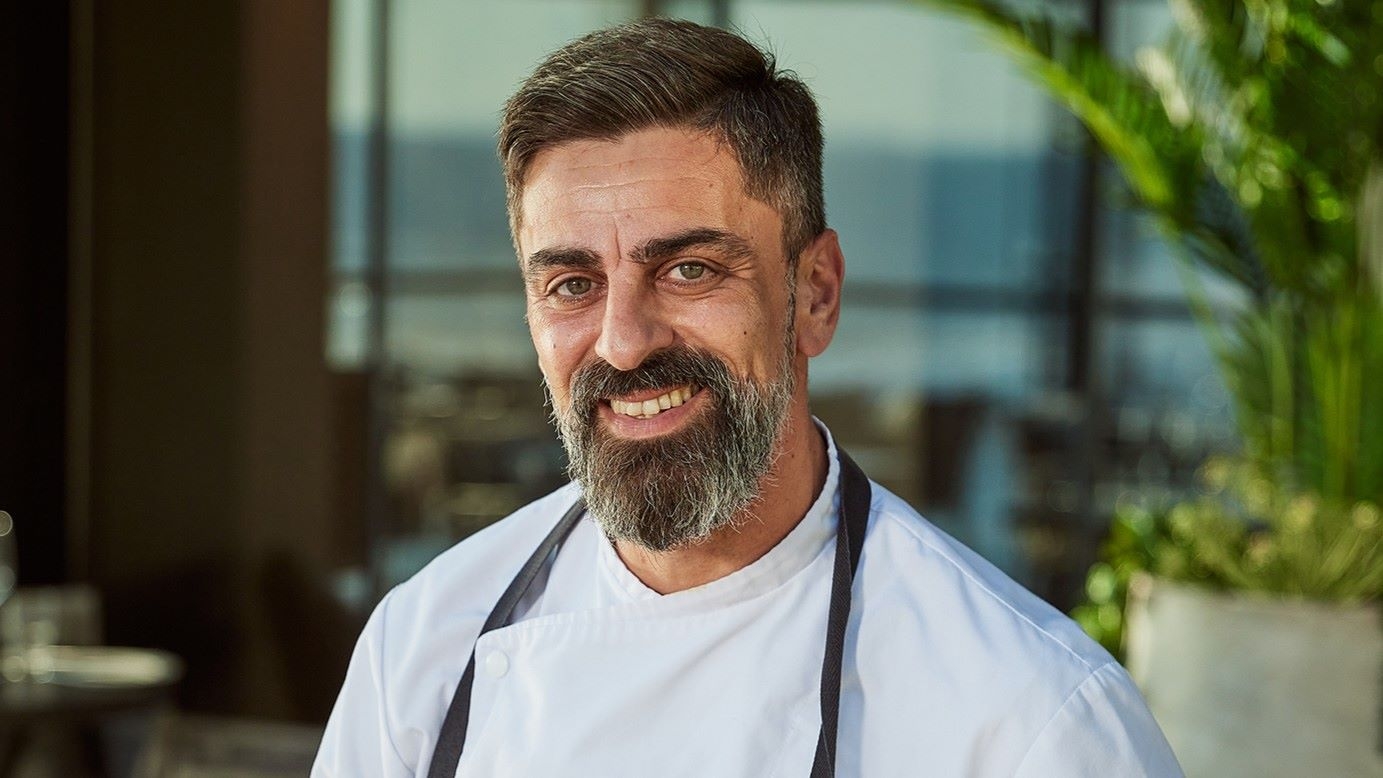
Growing up near the local market in the Wadi Nisnas area of Haifa, Roni Khalifa was unlike his peers. For one thing, he knew the difference between the marjoram and hyssop plants by the time he was 10.
As a child, he developed his palate by savouring the aromas and tastes of the different kinds of fish and seafood sold fresh at the market.
These flavours overlapped and became familiar to him over time, and eventually Khalifa became a chef. His career took him around the world and gave him the opportunity to cook in cities such as Berlin, Amsterdam and Brussels, as a specialist in French cuisine.
He spoke to me at his beach-facing home in Tell es-Samak, Haifa, where he shared cherished recipes passed down by his mother.
Among the traditional Palestinian dishes Khalifa served when we met were bamia (okra) cooked with tomatoes and garlic, served with a side of goat labneh, as well as stuffed aubergine and e’lit (chicory) with onions.
New MEE newsletter: Jerusalem Dispatch
Sign up to get the latest insights and analysis on Israel-Palestine, alongside Turkey Unpacked and other MEE newsletters
These were served elegantly on porcelain plates from China and France, the kind often treasured by Palestinian mothers and grandmothers as works of art and stored away safely in cupboards.
Khalifa spoke of the strict unwritten code that regulates Palestinians' native cuisine, which is rooted in the changing of the seasons.
For instance, during the summer, Palestinians would cook and preserve tomatoes for the rest of the year, recognising that the taste of a summer tomato could not be replicated by a winter one.
Similarly, dishes like "winter" khobeiza (mallow) or “spring” fowl maqluba can only be prepared in their respective seasons.
Khalifa argues that even the most skilled chef cannot fully master foreign cuisine without being immersed in its native environment. In that sense, Palestinian cooking cannot be taught outside of the Palestinian context. We cook with an instinct that relies on knowledge of tastes and aromas, intertwined with our individual memories and experiences.
The ritual of preparing and eating food is therefore an attempt to revive these memories and the emotions attached to them.
Resistance, innovation and tradition
Of course, the significance of these dishes extends beyond nostalgia or the changing of the seasons.
For example, mujaddara, a dish made with bulgur wheat, lentils, olive oil and onions, is not just a meal we enjoy during olive-picking season but also represents a tangible and undeniable proof of our existence on the land of Palestine; proof of an ancient familiarity with its crops.
As settlers uproot olive trees in occupied Palestine, the dish serves as a testament to our history here; one that helps us to fully embrace our identity amid the Israeli occupiers' attempts to erase it.
Needless to say, we should not assert that cooking Palestinian food is a direct form of resistance; however, we can acknowledge that maintaining such a cuisine is a part of larger efforts to preserve knowledge and tradition.
Pursuing knowledge for the purpose of liberation is a responsibility shared among all Palestinians. By cooking traditional dishes, we engage in a cultural defence against their appropriation by the Israelis.
But for the chefs I spoke to, a culinary tradition is not something static; it is something that moves and adapts with each new generation.
The kitchen is a civilisation’s first laboratory and artistic canvas; a place where innovation meets tradition to produce something new.
This is a continuous process, as evidenced in books published on Palestinian cuisine and Palestinian restaurants around the world.
Such restaurants offer “modern Palestinian dishes”, devised by chefs who draw on their direct connection to the land and a deep understanding of traditional cuisine to reimagine ancient dishes.
These “new” dishes include Galilee salad and risottos that use Palestinian freekeh (wheat grain) instead of rice, as well as concoctions such as fig carpaccio with Arabic cheese, salmon wrapped in grape leaves, and the Druze shalabato, a dish made of bulgur, tomatoes, white bean cream and local caper sauce.
The question as to whether dismantling traditional Palestinian dishes and creating new ones will cause the cuisine to lose its uniqueness is valid, and important.
But perhaps change is necessary. In the post-modern era, younger generations are increasingly reliant on ordering food rather than cooking, and traditional food is vulnerable to disappearing amid the consumer’s demand for speed, abundance and ease.
These trends come amid the existing threats posed to Palestinian cuisine, such as appropriation of traditional foods and the direct impediments to cooking placed on Palestinians by the Israeli occupation.
Examples of the former include the attempt to brand dishes like falafel, musakhan and maqluba as Israeli dishes and strip them from their origins in the traditional Palestinian kitchen. On a practical level, there are the difficulties involved in the import and export of ingredients from different areas of historic Palestine due to Israeli restrictions on movement.
Reinventing dishes gives new life and use to traditional ingredients and serves to spark interest in their origins.
Embracing change conditionally
I spoke to chef Omar Alwan, who welcomed what he called the “inevitable” change to traditional Palestinian cuisine, citing the transformation of Greek and Italian food as precedents.
However, he stressed that these changes must be undertaken with care and respect for essential ingredients. Experienced Palestinian cooks know that the use of ingredients like olive oil, for example, must not be manipulated in the pursuit of “gourmet” dishes.
Similarly, substitutions, such as butter in place of samneh (ghee), or tasteless imported freekeh in place of baladi (native) freekeh grown on the plains of Palestine, are unacceptable. The same holds true for substitutions of baladi thyme and sumac.
Alwan was born in Ein Mahel, a village near Nazareth, but was raised on the cuisine of his Syrian grandmother, who came from Aleppo. She had married in Haifa in the early 1930s and later fled with her husband to Nablus in today’s West Bank during the Nakba.
Alwan took a bachelor’s degree in design before moving to Germany, where, in partnership with his brother, he opened his first restaurant. The pair later returned to Palestine, but Alwan retained the cooking techniques he picked up in Europe, incorporating these into his Palestinian cuisine.
He told me that he also fused traditional Arab cooking techniques into his style of cooking.
One old method Alwan uses during the summer months to preserve vegetables, legumes and dairy products is to spread them out on rooftops to let them dry out in the sun. He then collects them before sunset, to avoid exposing them to the morning dew, which can cause dampness and mould.
The sun’s heat acts as a natural defence against insects, making it an effective method for preserving food without damage.
In addition to the sun-drying method, our grandmothers also used an ageing technique to preserve meat - a method that is used today by high-end restaurants worldwide. The women would saute the meat in fat and then store it on the roof of the house, a process that would help keep the meat fresh and edible for at least two weeks.
A bond with the land
The agricultural lifestyle of most Palestinians in historic Palestine is a major factor in the richness and variety of the region’s dishes, alongside the diversity of the climate - from the cold, northern regions bordering Lebanon and Syria to the more temperate central areas that resemble Mediterranean countries, and the southern desert stretching from Negev to Eilat on the border with Egypt.
Despite the similarities with some dishes in neighbouring countries, Palestinian cuisine boasts unique specialities, such as akoob (gundelia), e’lit, and khobeizah , which are exclusive to Galilean cuisine and are not found in Syria.
Even maftoul (a variant of couscous), prepared according to traditional Palestinian methods, is not recognised in Syria, despite its considerable influence on Syrian cuisine.
Alwan told me of the story behind his famous Galilee salad.
“I’m used to working directly on the land, as well as touring the mountains and plains of our country,” he said.
"One day, I was near my village of Ein Mahel… it was green almond season and I found some wild fennel. It occurred to me that I could use the two ingredients to create a salad… it combines baladi fennel, green almonds, mint, lemon, olive oil and salt.
"I garnished it with roasted almonds and raisins from Hebron, and dried cherries from the Golan."
Alwan believes the best way to prepare dishes involves ingredients procured directly from their place of origin.
"For the finest possible flavour, I use molokhia sourced from Jenin and the village of Sandala, freekeh harvested in Arraba and Deir Hanna, akoob plucked from the Golan, verdant thyme cultivated in the Galilee mountains, baladi cucumbers grown in the plains of Marj Ibn Amer and the village of Zoubiya, rain-fed tomatoes, Armenian cucumbers, pomegranates, watermelons, and melons cultivated in the fertile Kafr Kanna plain," he said.
"Additionally, I include moqra (Arabian Aloe) and baladi mushrooms procured from the bountiful plains of Batouf... And last but not least, I employ olive oil from my village, Ain Mahel, as well as from each village in the Galilee!"
Resourcefulness
In the city of Baqa al-Gharbiya, located in the Little Triangle, an enduring legacy of division prevails.
Baqa al-Gharbiya and Baqa al-Sharqia were two villages close to each other but representative of a stark divide. The eastern village, Baqa al-Sharqia, today finds itself under the governance of the Palestinian Authority as part of the occupied West Bank. The western village, Baqa al-Gharbiya falls under the control of Israel - the two villages divided by the separation wall raised by the Israeli occupation.
It is within this fragmented city that Nof Atamna was born to a father who was Baqa's first doctor, and a mother who defied social expectation by pursuing higher education; the only woman in her village to do so.
During her formative years, Atamna found guidance under the watchful eyes of her grandmothers from Haifa and Baqa.
Within Palestinian households, women played a central role, assuming responsibility for preparing meals and feeding the entire family.
Their mastery of the culinary arts went beyond feeding. They were entrusted with safeguarding the family's nutrition and managing the household budget, a duty that required precision and resourcefulness.
Her grandmothers’ nurturing provided not just emotional support but exposed Atamna to the tapestry of traditions in the cuisine of their hometowns.
The young woman’s palate matured at their tables, and those culinary influences continue to make a mark on her cooking today.
Atamna's journey from a curious observer to a master of the culinary craft has been remarkable. She holds a PhD in microbiology from Tel Aviv University, but rather than a research department, her laboratory is found at her family home in the village of Kafr Qara. There, I was met with the enticing aromas of her authentic Arab recipes, honed during her travels, from Iraq to Morocco.
'These scents were a part of our upbringing'
- Nof Atamna, chef
With skilful twists of her hands, Atamna seamlessly blends flavours and techniques from different Arab regions, and in doing so creates her own unique culinary style.
Each dish she prepares becomes a conduit for reviving the past, evoking memories and fostering a sense of connection to a culinary lineage that has stood the test of time.
Atamna inherited land from her father, a doctor and farmer, and on her plot she grows radishes, onions, mint and citrus trees.
When she goes out to gather wild asparagus, lingonberry leaves and wild thyme from different parts of Palestine, she not only renews her connection with nature but also reconnects with her family's and community's rich heritage.
These excursions evoke memories of her childhood, as she recalled: “These scents were a part of our upbringing - the earthy aroma of moist soil and the unmistakable fragrance of thyme, recognisable even from a kilometre away.”
Atamna drew my attention to an important aspect of Palestinian cooking: resourcefulness.
“We make use of every part of the crop," she said. "For example, we never discard the stems of a specific plant. Even when the green roots of old onions sprouted, what we refer to as bsharash in our dialect, we would fry them in olive oil and enjoy them. Similarly, we would fry the leaves of the radish plant that were previously discarded.”
Recalling her grandmothers' habits, Atamna described how she would tear off these leaves, fry them with olive oil and onions, and add a splash of lemon juice, just as she would do with the chicory plant.
Palestinians also use every part of the grapevine, including the leaves, while cauliflower leaves, or al-zahra al-baladia, are boiled and stuffed with bulgur, garlic and tomatoes to avoid waste.
In a society where poverty and simplicity are prevalent, the practice of maximising every available resource has become an integral part of daily life.
The start of a movement
My assessment of the “modern Palestinian food” movement is premature, as the movement is still in its early stages.
However, one aspect that can be affirmed is that a modern Palestinian food culture has emerged through the efforts of chefs who have revamped cooking techniques, devised new recipes and introduced inventive methods of presentation, while maintaining a connection with the past.
One often overlooked aspect of modernity is the transition from traditional family settings, where, for example, raw kibbeh was enjoyed exclusively during special occasions like weddings or feasts at home, to restaurant-based culinary culture.
This shift does not necessitate abandoning age-old practices in favour of the new, but rather demonstrates Palestinian attempts to give new life to their culinary traditions.
Drawing inspiration from collective memory and acknowledging past experiences, these endeavours underscore a commitment to preserving customs while countering attempts to appropriate Palestinian dishes and attribute them to Israeli culture.
However, progress in this direction may inadvertently invite further appropriation of Palestinian cuisine, leading to setbacks.
Nonetheless, each step forward taken by the chefs in this journey serves as a testament to their unwavering resilience and commitment to preserving their unique culinary identity; an identity thoroughly intertwined with Palestinian history, geography, society and the occupation.
Middle East Eye delivers independent and unrivalled coverage and analysis of the Middle East, North Africa and beyond. To learn more about republishing this content and the associated fees, please fill out this form. More about MEE can be found here.


